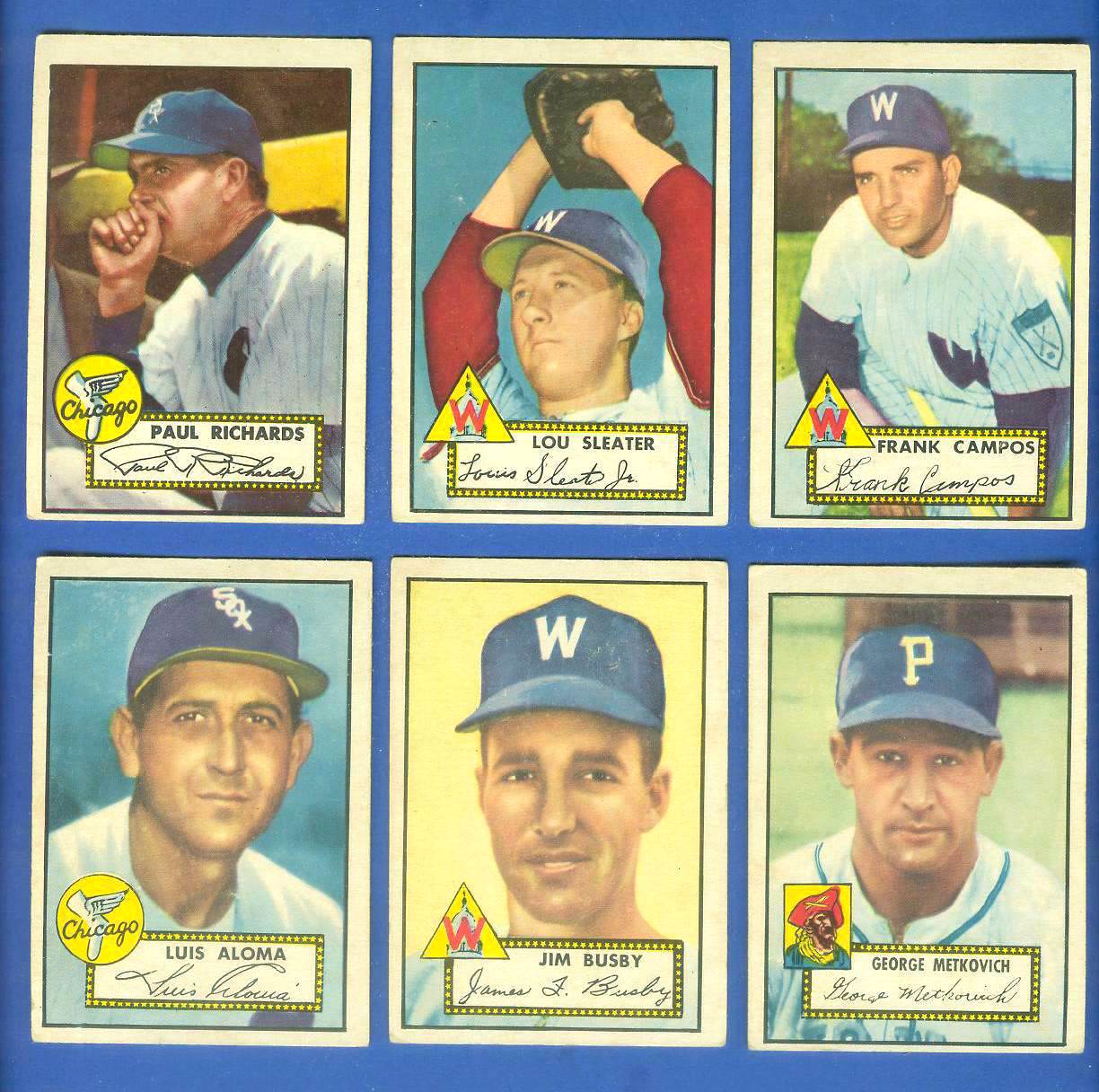1952 Topps #310 George Metkovich (Pirates)


Please wander around the website for more info, prices, values & images
on vintage baseball, football, basketball, hockey, sport and non-sports cards.
1963 Bazooka ALL-TIME GREATSIn 1963, competitive pressures compelled Topps to add a bonus to it's 1963 Bazooka boxes. These cards were inserted inside boxes of Bazooka bubblegum at 5 per box. The 41-card set of Hall-of-Famers features black and white photos of the player inside a gold plaque. A short biography appears on the back, a first (and last) for Bazooka. The 41 numbered cards measure 1 9/16" by 2 1/2". Scarcer silver colored plaques also exist. |


1970-71 Action Film Catridges |


1993 Topps Inaugural |

It's cool to have a card of your favorite player.
It's even cooler to have your favorite player's jersey or bat.
Well just think how cool it is to have a card of your favorite player
embedded with a piece of his bat or jersey that he used in a real major league game !!!
That's the concept that Upper Deck dazzled the hobby with in 1996. Ever since the
hobby has been in love with Game-Used memorabilia cards and they have become a
staple of sportscard collecting. Originally they were very scarce inserts with
less than 1 every few boxes. Now these insert cards are so popular that
many products include one in every pack.
Be sure you visit our Game-Used card section with nearly 1,000 available at discount prices.
